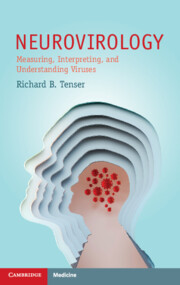Book contents
- Neurovirology
- Neurovirology
- Copyright page
- Dedication
- Contents
- Preface
- 1 Introduction to Virology
- 2 Measurement of Infectious Virus
- 3 Molecular Biology
- 4 The Immune System
- 5 Viral Pathogenesis
- 6 Viral Infections of the Nervous System
- 7 Neurovirology and Immunology
- 8 Experimental Neurovirology
- 9 The Future
- References
- Index
- References
3 - Molecular Biology
The Synthesis of DNA, RNA, Protein
Published online by Cambridge University Press: 13 July 2023
- Neurovirology
- Neurovirology
- Copyright page
- Dedication
- Contents
- Preface
- 1 Introduction to Virology
- 2 Measurement of Infectious Virus
- 3 Molecular Biology
- 4 The Immune System
- 5 Viral Pathogenesis
- 6 Viral Infections of the Nervous System
- 7 Neurovirology and Immunology
- 8 Experimental Neurovirology
- 9 The Future
- References
- Index
- References
Summary
The “Central Dogma” describes DNA being transcribed into RNA and RNA being translated into protein. In all instances,a biochemical template is used.
The template concept is based on the complementation of specific nucleotides for other specific nucleotides. For example, the deoxynucleotide thymidine complements (hybridizes – binds to) the deoxynucleotide adenine.
The concepts of complementation and hybridization are used in PCR and nucleic acid hybridization – including Southern blot, northern blot, and in situ hybridization – to detect viral DNA and RNA.
The concept of the synthesis of DNA from nucleotides is utilized in the development of some antiviral medications. In these, nucleoside analogs are used, which when converted to nucleotides in cells and then incorporated into viral DNA or RNA damage the viral DNA or RNA. This blocks further synthesis of the viral nucleic acid genome. Nucleoside analogs have been of great value in treating people with HIV (human immunodeficiency disease virus) infection.
Abnormalities in human DNA may lead to significant mutations such as the clinically important sickle cells disease. With modern technology this can be treated by using a virus to bring the normal gene for hemoglobin into human cells.
Keywords
- Type
- Chapter
- Information
- NeurovirologyMeasuring, Interpreting, and Understanding Viruses, pp. 45 - 67Publisher: Cambridge University PressPrint publication year: 2023

